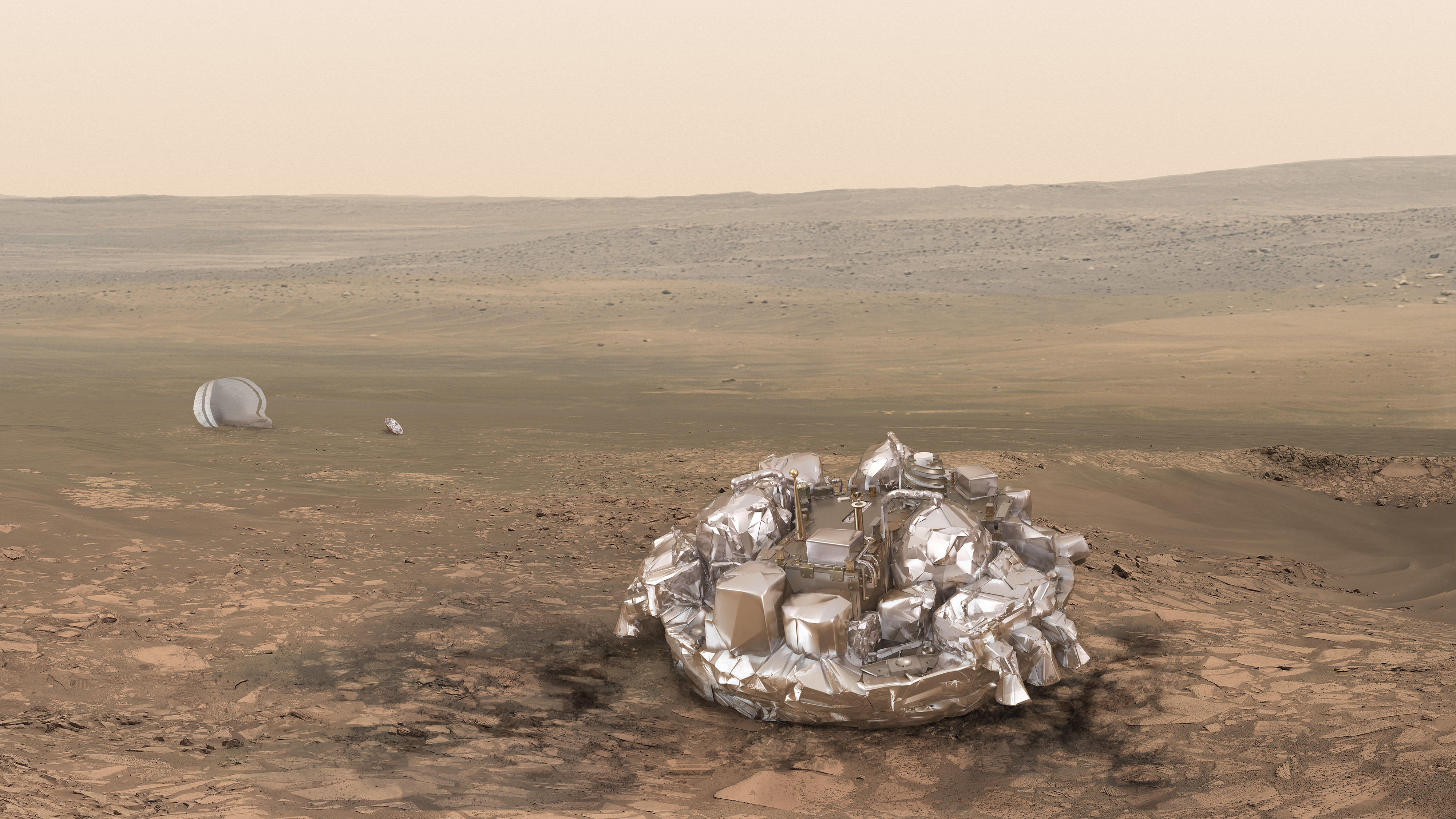European Spacecraft Prepares to Land on Mars Next Week

Ready for descent — deploy thrusters! The Schiaparelli spacecraft, part of the European Space Agency's (ESA) ExoMars mission to Mars, has received its landing commands for its expected Oct. 19 touchdown on the Red Planet, and a new video shows how the spacecraft will descend.
Launched on March 14, the ExoMars mission rocketed two connected spacecraft, the Trace Gas Orbiter and its Schiaparelli lander, toward Mars. The two spacecraft are expected to separate on Sunday (Oct. 16), and if all goes according to plan, the Schiaparelli lander will descend on the Martian surface three days later. While the Schiaparelli lander is on the Martian surface, the Trace Gas Orbiter will orbit the Red Planet and study its atmosphere.
The new video details the spacecraft's landing commands, which include discharging the front and back aeroshells and deploying the craft's descent sensors, braking parachute and thrusters for a controlled landing. [Gallery: Europe's ExoMars Missions in Pictures]

The Schiaparelli spacecraft is set to land in Mars' Meridiani Planum region, close to the planet's equator. It will enter the Martian atmosphere at about 13,000 mph (21,000 km/h) and will have 6 minutes to brake to a safe speed for landing, ESA officials said in a statement.
To ensure the challenging descent goes according to plan, the lander's sensors will monitor its height above the Martian surface, starting at 4 miles (7 kilometers). When the spacecraft is about 6.5 feet (2 meters) above the surface, it will hover for a moment, cut its thrusters and fall freely to the ground, as shown in the video.

The uploading of the landing commands to ESA's ExoMars spacecraft marked a major milestone in preparing Schiaparelli for its touchdown on Mars. The commands were uploaded in two sets — one on Oct. 3 and another on Oct. 7.
Once safely on the ground, Schiaparelli will study Mars' wind speed and direction, humidity, pressure, air temperature and more. Then, the spacecraft's measurements will be sent to the Trace Gas Orbiter above. The main goal of this mission is to pave the way for the life-hunting ExoMars rover, scheduled to launch in 2020.
Breaking space news, the latest updates on rocket launches, skywatching events and more!
Editor's note: This article has been updated to reflect that as of May 2016, the next ExoMars mission has been moved to 2020 from 2018.
Follow Samantha Mathewson @Sam_Ashley13. Follow us @Spacedotcom, Facebook and Google+. Original article on Space.com.
Join our Space Forums to keep talking space on the latest missions, night sky and more! And if you have a news tip, correction or comment, let us know at: community@space.com.

Samantha Mathewson joined Space.com as an intern in the summer of 2016. She received a B.A. in Journalism and Environmental Science at the University of New Haven, in Connecticut. Previously, her work has been published in Nature World News. When not writing or reading about science, Samantha enjoys traveling to new places and taking photos! You can follow her on Twitter @Sam_Ashley13.
